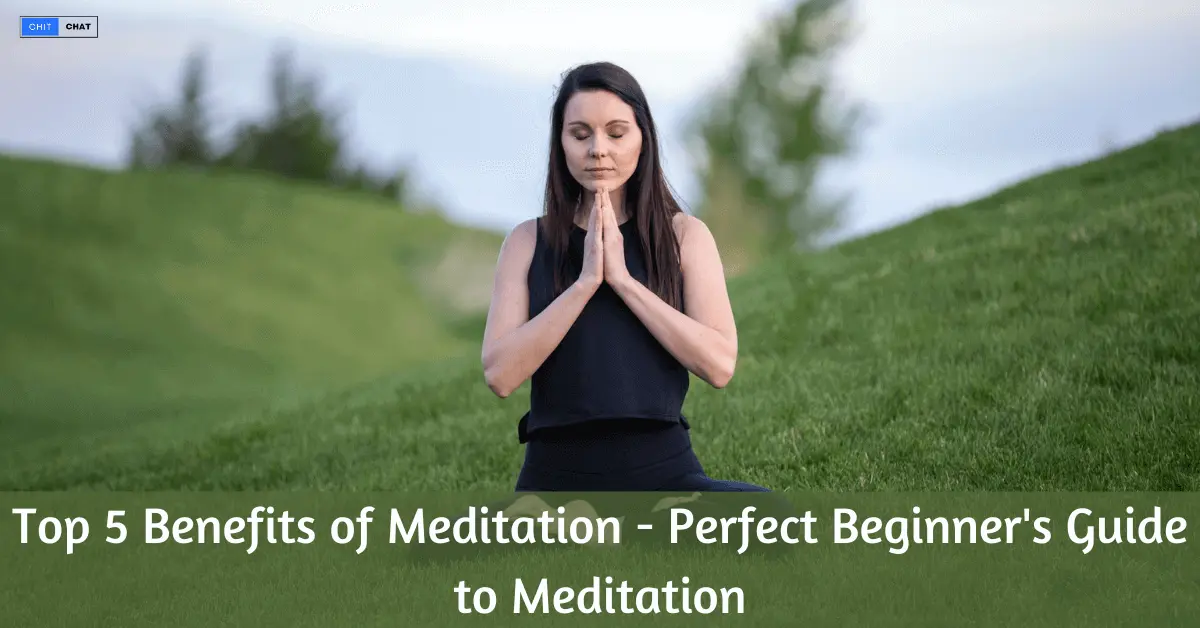Top 5 Benefits of Meditation – A Beginner’s Guide to Meditation
Meditation is a practice that has been around for thousands of years, known for its profound benefits on mental, emotional, and physical well-being. In today’s fast-paced world, where stress and anxiety are prevalent, learning how to meditate can provide a valuable tool for finding inner peace and clarity. This beginner’s guide will help you understand the basics, explore different techniques, and provide practical tips to incorporate meditation into your daily life.
Introduction
Meditation is a practice that involves training the mind to achieve a state of calm and focused awareness. It originated in ancient cultures and has been practiced in various forms across different religions and spiritual traditions. However, it is not limited to any particular belief system and can be practiced by anyone, regardless of their religious or cultural background.
Benefits
The benefits of meditation are wide-ranging and well-documented. Regular meditation practice has been shown to reduce stress, improve concentration, enhance self-awareness, promote emotional well-being, and increase overall happiness. It can also help manage anxiety, alleviate symptoms of depression, and improve sleep quality. Additionally, it has been linked to better physical health by lowering blood pressure, boosting the immune system, and reducing the risk of heart disease.
Getting Started with Meditation
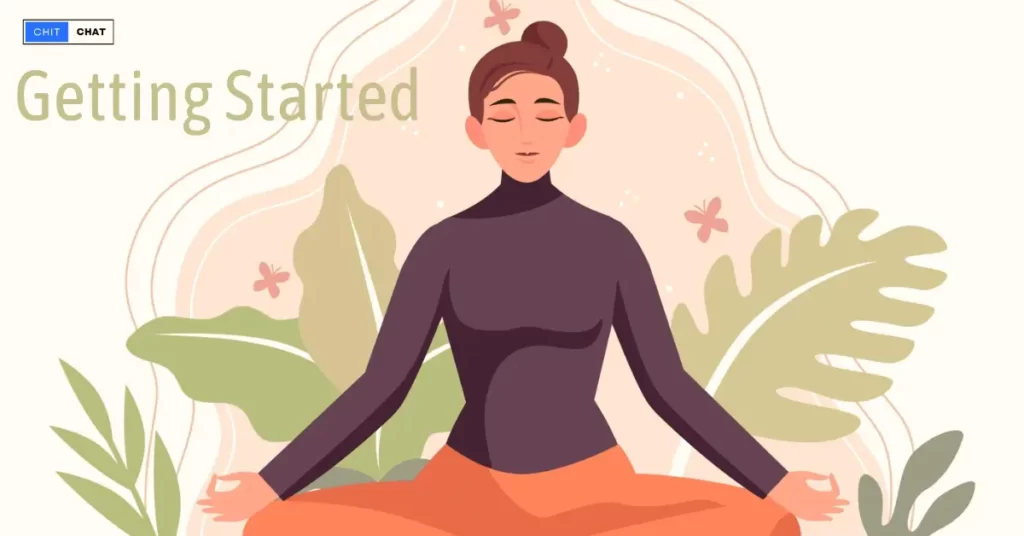
Before diving into meditation, it’s essential to set the right foundation for your practice.
Creating a Quiet Space
Find a quiet and peaceful space where you can meditate without distractions. It can be a spare room, a corner of your home, or even a park where you feel at ease. Make sure to create an environment that promotes relaxation, such as dim lighting, comfortable cushions, or a meditation chair, and any items that hold personal significance or create a serene atmosphere.
Choosing the Right Time
Select a time of day that works best for you. Some people prefer to meditate in the morning to start their day with clarity and calmness, while others find it helpful to meditate in the evening to unwind and release the day’s stresses. Experiment with different times to see what suits you and your schedule.
Comfortable Posture
Maintain a comfortable posture during meditation. You can sit on a cushion or chair with your back straight, shoulders relaxed, and hands resting comfortably in your lap. If sitting cross-legged is uncomfortable, you can also sit on a chair with both feet planted firmly on the ground.
Basic Meditation Techniques
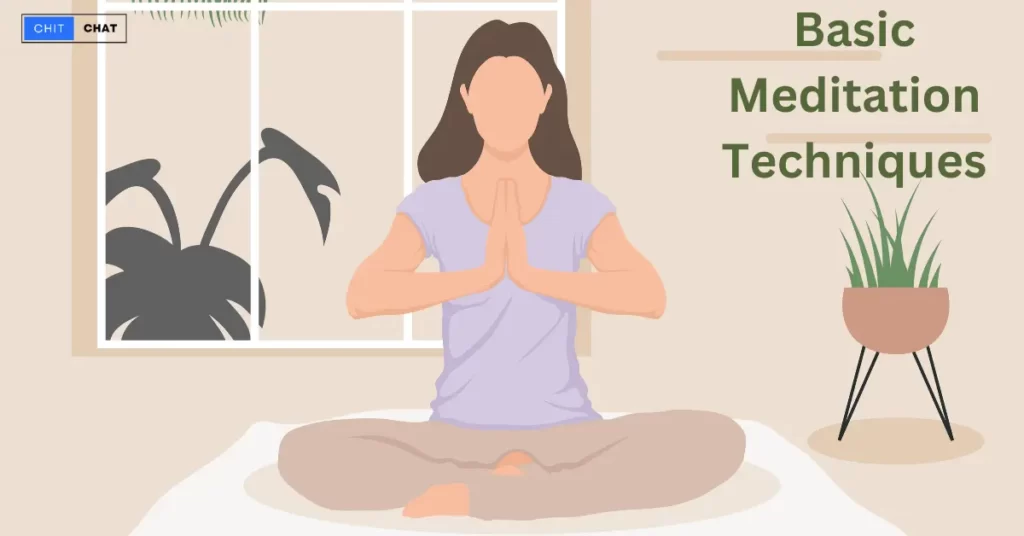
There are several meditation techniques to choose from, but as a beginner, it’s best to start with the basics. Here are three widely practiced techniques:
Mindfulness
Mindfulness meditation involves bringing your attention to the present moment by focusing on your breath, bodily sensations, or the environment around you. The goal is to observe your thoughts without judgment and gently bring your focus back to the present whenever your mind wanders. This technique cultivates a sense of awareness and can be practiced both in formal sessions and in daily activities.
Loving-Kindness
Loving-kindness meditation is a practice that involves cultivating feelings of love, compassion, and goodwill towards yourself and others. It typically begins with directing kind and positive thoughts towards oneself, then extending those sentiments to loved ones, acquaintances, and even people you may have difficulties with. This technique helps develop empathy, forgiveness, and a sense of interconnectedness with all beings.
Guided
Guided meditation involves listening to a recorded session or following the instructions of a teacher. It can be an excellent option for beginners as it provides structure and guidance throughout the practice. Guided meditations often focus on relaxation, visualization, or specific themes such as gratitude or self-compassion.
Top 5 Best Gaming Headphones 2000 रुपए से कम में – हिंदी में
Breathing Techniques in Meditation
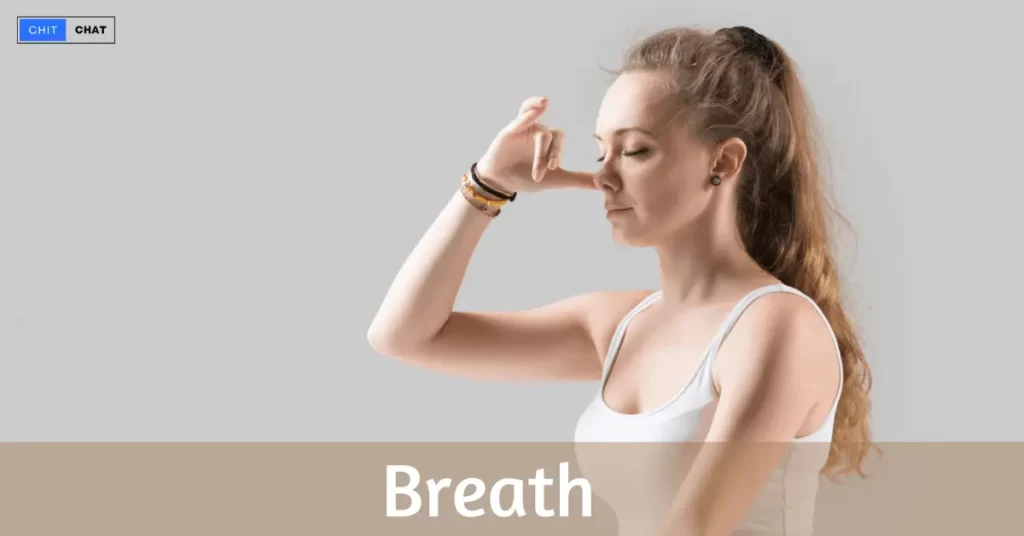
The breath is a fundamental anchor in meditation, helping to calm the mind and bring you into the present moment. Here are three breathing techniques commonly used:
Deep Breathing
Deep breathing involves taking slow, deep breaths in through the nose, allowing the breath to expand the belly, and exhaling fully through the mouth. This technique promotes relaxation, reduces stress, and increases oxygen flow throughout the body.
Box Breathing
Box breathing is a technique that involves inhaling, holding the breath, exhaling, and holding again, each for an equal count of time. It follows a rhythmic pattern, often using a count of four or six for each phase. Box breathing helps regulate the breath, calm the nervous system, and induce a state of relaxation.
Alternate Nostril Breathing
Alternate nostril breathing is a technique that involves breathing through one nostril at a time while blocking the other nostril with your finger. This practice aims to balance the energy in the body, calm the mind, and improve focus. It is believed to harmonize the left and right hemispheres of the brain.
Dealing with Common Challenges
As you embark on your journey, you may encounter some common challenges. Here are a few tips to overcome them:
Restless Thoughts
When you notice your mind wandering, gently acknowledge the thoughts without judgment and bring your focus back to your breath or chosen anchor point. Over time, with practice, you’ll develop the ability to observe your thoughts without getting caught up in them.
Physical Discomfort
Sitting in one position for an extended period can sometimes lead to physical discomfort. It’s important to find a balance between maintaining a relaxed posture and being physically at ease. Experiment with different sitting positions, use cushions or props for support and listen to your body’s needs.
Finding Consistency
Consistency is key to establishing a regular meditation practice. Start with short sessions, even just a few minutes a day, and gradually increase the duration as you feel comfortable. Setting a specific time for meditation and incorporating it into your daily routine will help make it a habit.
Incorporating Meditation into Daily Life
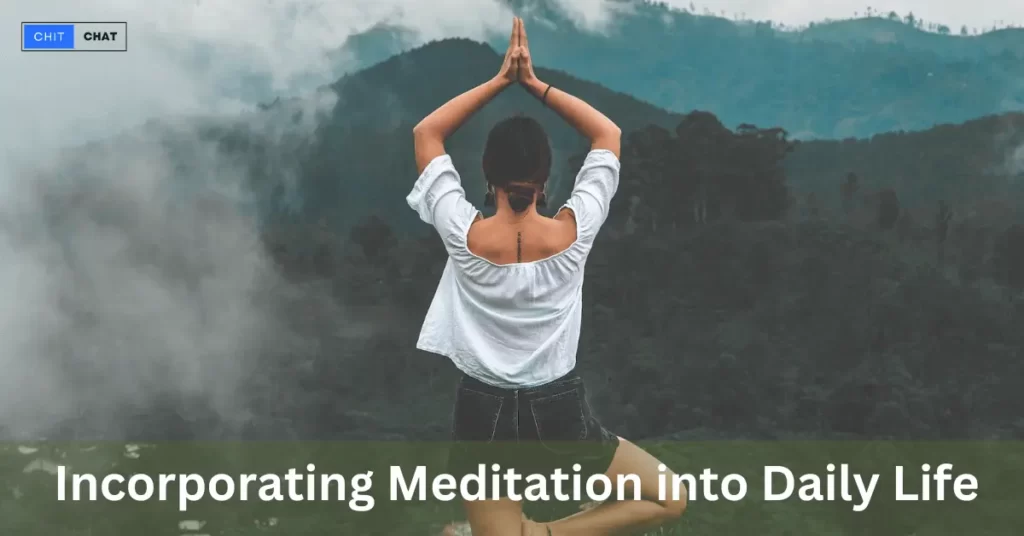
To experience the full benefits of meditation, it’s essential to integrate it into your daily life. Here are some practical tips to help you do that:
Start with Short Sessions
If you’re new to meditation, begin with shorter sessions of five to ten minutes and gradually increase the duration. Consistency is more important than duration, so aim for regular practice rather than long sessions.
Establishing a Routine
Set a specific time for meditation each day and make it a priority. Whether it’s in the morning, during a lunch break, or before bed, having a consistent routine will help you stay committed to your practice.
Meditation Apps and Resources
There are numerous apps and online resources available that can support your practice. These apps offer guided meditations, timers, and progress tracking, making it easier to incorporate it into your daily life.
Deepening Your Meditation Practice
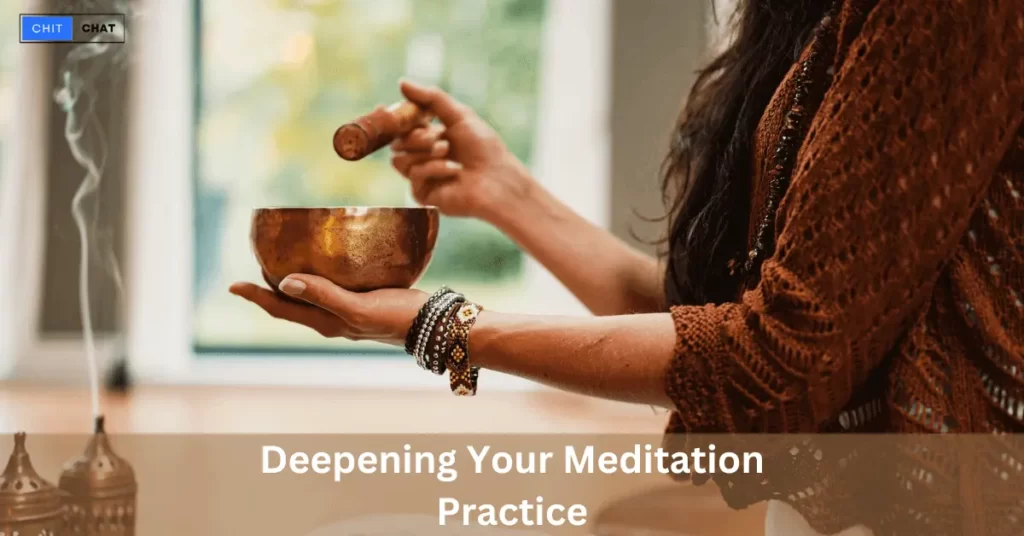
Once you feel comfortable with the basics, you can explore more advanced techniques and ways to deepen your practice:
Advanced Meditation Techniques
As you progress in your journey, you may wish to explore advanced techniques such as Vipassana, Zen, or Transcendental Meditation. These practices require guidance from experienced teachers and may involve long periods of silent meditation or specific contemplative exercises.
Joining a Meditation Group
Joining a group or attending group sessions can provide a supportive and enriching environment. Being in the presence of like-minded individuals can deepen your practice, offer opportunities for learning, and foster a sense of community.
Retreats and Workshops
Consider participating in retreats or workshops led by experienced teachers. These immersive experiences allow you to dedicate focused time to your practice, learn from experts, and connect with others on a similar path.
Conclusion
Embarking on the journey of meditation can be transformative, providing a pathway to inner peace, self-discovery, and personal growth. By incorporating the techniques and tips outlined in this beginner’s guide, you can develop a solid foundation for your practice. Remember, it is a lifelong journey, and with patience, consistency, and an open mind, you can reap its numerous benefits.
FAQs
- How long does it take to see the benefits of meditation?
The benefits of meditation can be experienced immediately, even after just a few minutes of practice. However, for long-lasting and significant changes, regular and consistent weeks or months are recommended.
- Can meditation help with anxiety and stress?
Yes, it has been shown to be effective in reducing anxiety and stress. It helps calm the mind, regulate the nervous system, and cultivate a greater sense of inner peace and resilience.
- Can I meditate lying down instead of sitting?
While it’s possible to meditate lying down, it’s generally recommended to sit upright to maintain a sense of alertness and prevent falling asleep. However, if physical discomfort or health conditions prevent you from sitting, lying down is a viable alternative.
- How often should I meditate?
Consistency is more important than duration. Aim to meditate daily, even if it’s just for a few minutes. As you develop a habit, you can gradually increase the frequency and duration of your sessions.
- Can meditation be practiced by anyone?
Yes, it can be practiced by anyone, regardless of age, background, or beliefs. It is a universal practice that has been adapted to various cultures and religions, but it can also be approached as a secular practice focused on well-being and self-awareness.

